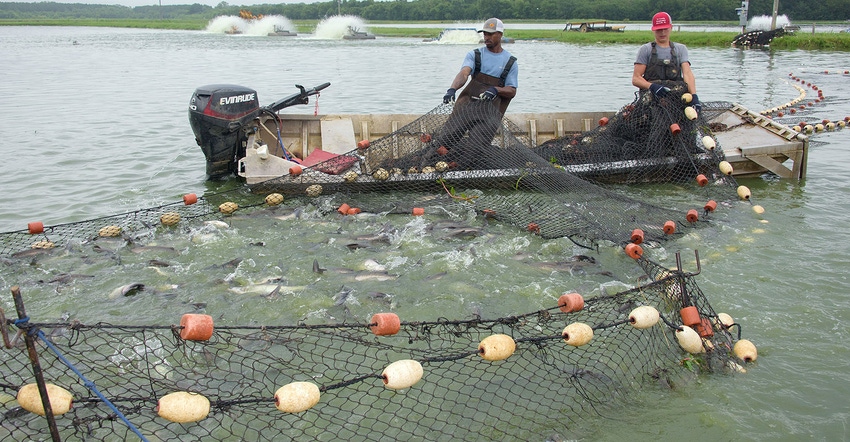July 22, 2020

Cash flow challenges are the latest struggle for Mississippi catfish producers, as product sales to their biggest consumers — restaurants — are way down due to COVID-19.
“Even though prices are relatively stable, it has no meaning when producers are unable to sell their products,” said Ganesh Kumar, an agricultural economist at Mississippi State University’s Delta Research and Extension Center in Stoneville, Miss. “Sales lost due to COVID-19 related closures are irrecoverable.
“Sales lost to restaurants have a downward effect on the supply chain. Eventually, fish inventory builds up in ponds, and producers spend more money on maintenance feeding, increasing the cost of production,” he said.
Catfish packed for sales to restaurants are difficult to repackage for sales to grocery stores and other retail outlets. This problem made it difficult to quickly tap the increasing demand at the retail sector, resulting in processing sales significantly lower in April and May of 2020.
“Prices have been relatively stable at slightly above $1 per pound for the last three to four months. However, individual producers are hurting because of reduced sales due to business closures,” Kumar said.
The National Agricultural Statistics Service reports that the U.S. catfish industry generated about $379 million in sales in 2019, of which $226 million originated from farms in Mississippi. U.S. consumption of seafood, which includes catfish, is 16 pounds per capita annually, up from 14.7 pounds in 2016. U.S. catfish accounts for 0.56 pound of this amount.
Jimmy Avery, Extension aquaculture specialist with the MSU Thad Cochran National Warmwater Aquaculture Center, said Mississippi continues to lead the country in catfish production, with 35,300 acres of catfish ponds as of June 30. The majority of these ponds are in the Delta, but about 8,000 water acres are in east Mississippi.
“Farmers have gotten more efficient by producing more fish per acre,” Avery said. “In 2009, farmers were producing around 4,000 pounds of catfish per acre. In 2019, that production level had increased to 6,700 pounds per acre, an increase of 59 percent.”
Avery said that increase can be attributed to the adoption of new technologies such as the use of hybrid catfish, more intensive production systems, increased aeration and improved vaccines.
The significant slump in sales to restaurants is contributing to another challenge facing the catfish industry: finding adequate markets for very large fish. The longer fish are held in ponds, the bigger they get. Not only does this cost money in feed, reducing profit, but it produces a fish with filets too large for traditional markets.
Imported fish products continue to erode the domestic market for catfish.
“In 2019, 62% of the catfish-like products eaten in the U.S. were imported,” Avery said.
MSU continues to support the U.S. catfish industry through research and Extension from the Thad Cochran National Warmwater Aquaculture Center. Major areas of current research are fish health, water quality, production systems, economics, nutrition and genetics. Additionally, the MSU College of Veterinary Medicine operates the Aquatic Animal Diagnostic Laboratory, where producers can have their fish diagnosed and water quality checked.
Source: MSU Extension Service, which is solely responsible for the information provided and is wholly owned by the source. Informa Business Media and all its subsidiaries are not responsible for any of the content contained in this information asset.
About the Author(s)
You May Also Like






